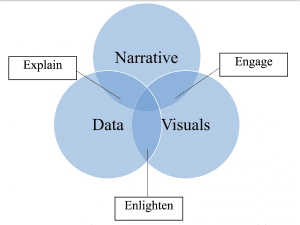I spent last week in beautiful Las Vegas, where LeveragePoint sponsored the CEB, Now Gartner’s Sales and Marketing Summit. I met so many great people, and listened to incredible thought leaders share their expertise on the past, present, and future of sales and marketing. From all that information, I took away three key themes:
- “Digital is going to take us on a journey whether we like it or not.”
With all the whispers of “digital transformation” this theme isn’t a big surprise. The digital age is here, and it’s not going anywhere. Brent Adamson, Principal Executive Advisor at CEB, says that it’s an “inescapable evolution.” 93%, 94%, and 83% of B2B buyers use digital channels in the early, middle, and late stages of their buying journey, respectively. This promotes a tough buying environment for sellers: bigger buying groups, overwhelmed buyers, “good enough” buying, and stalled deals. “Empowered” buyers are becoming overwhelmed buyers, with too much information and too many stakeholders, leading to stalled deals or no decision at all. An evolving response to the tough environment is marketing and sales investments in digital capabilities. - “B2B buying is a moving target.”
Your prospects are engaging with you through multiple channels, simultaneously. 27% of the overall buying journey is spent researching independently, online (digital marketing is key here!). 22% is spent meeting with an internal buying group (they’re 49% of the way through, and still haven’t spoken with sales). 18% is spent researching independently, offline. 16% is spent doing “other.” Finally, just 17% of the overall buying journey is spent meeting with potential buyers (but remember, you’re not the only buyer). This doesn’t mean the role of a sales rep is obsolete by any means; it’s more important than ever. The slice of that 17% that you do get, needs to be customer-focused, value-driven, and of course, digital. Which brings me to my next theme: - “Just because in-person begins, doesn’t mean digital ends.”
Keynote speaker, Brent Adamson, says that if we take anything away from this conference, it should be this. It’s vital to arm your reps with digital tools that guide their in-person conversations, establish credibility, and speak directly to customer pain points.
The good thing about digital buyers is even though we may not be speaking to them, we are tracking their every move. Data capture is HUGE in this environment, but what do we do with all that information? How do we use it to our advantage when we finally get to talk with our buyers?
Brent Dykes of DOMO, hosted an incredible session entitled, “Make Your Data More Compelling with Stories,” and provided the audience with an important definition of Data Storytelling:
A STRUCTURED APPROACH FOR COMMUNICATING DATA INSIGHTS MORE EFFECTIVELY TO AN AUDIENCE USING NARRATIVE ELEMENTS AND DATA VISUALIZATIONS.
There is psychology associated with data storytelling; humans hear statistics, but they feel stories. A lot of the time, when people are approached with data, we are on the defensive; we are critical and skeptical. We don’t want to be fooled by the data. However, as soon as we position that same data as a story, the guards come down. Research shows that stories are more memorable and persuasive, as well. 5% of people report remembering statistics vs. 63% remembering the same data told within a story. Statistics are valued at $1.14 vs. $2.38 for the same stats in a story. The 3 keys to data storytelling are narrative, visuals, & data.

Sales reps should utilize the data they have on a prospect to engage in a story about them; explain to and enlighten the prospect on why their story would be better with your solution. Here are 6 quick keys to successful data storytelling:
- Identify the right data: align your data to your message
- Choose the right visualizations: all charts are not created equal
- Calibrate visuals to your message: anticipate your audience’s comparison needs
- Remove unnecessary noise: don’t overwhelm your audience needlessly
- Focus attention on what’s important: highlight what matters with color & text, and use “content staging” aka animation to reveal insights
- Make your data accessible and engaging: use direct labels to reduce the effort required to interpret your data
“The ability to take data – to be able to understand it, to process it, to extract value from it, to visualize it, to communicate it – that’s going to be a hugely important skill in the next decades.” (Hal Varian, Chief Economist at Google)
Okay, so our digital buyer has finally had a conversation with us, and we told him or her a killer story using data … now what? Michael McCune, Senior Executive Advisor at CEB, says that affinity does not guarantee advocacy; 49% of B2B buyers are willing to buy and advocate, while the remaining 51% are ready to buy, but not ready to advocate. They’re afraid of losing respect, credibility, and at the very worst, their job. This begs an important question for sales:
HOW DO WE MOTIVATE BUYERS TO SPEAK UP ON OUR BEHALF?
It starts with providing sales reps the right tools to succeed. Digital, interactive Value Propositions allow the seller to collect even more buyer data throughout the sales conversation, creating a unique leave-behind tailored to the buyer. This engages the buyer in an interactive experience that arms them with a case-specific story to advocate for internally. Quantified Value Propositions win advocacy by providing buyers with exactly what their C-suite wants to know; how this solution is going to make us or save us money. Combining the two is a force to be reckoned with, and lights a fire under the you-know-whats of that 51%. May the force be with you.

